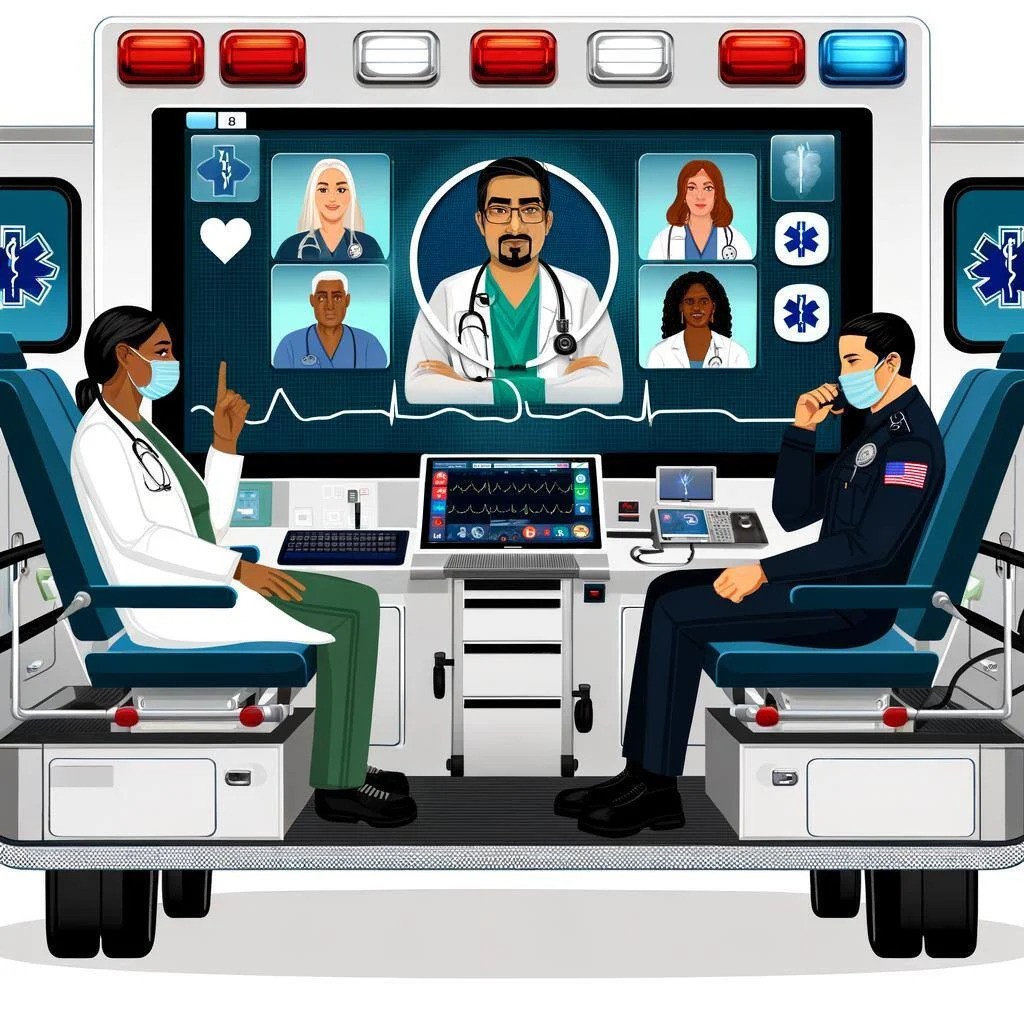Exploring the innovative approach of integrating telemedicine services with Emergency Medical Services (EMS) personnel to enhance healthcare accessibility in communities.
Challenges in Healthcare Accessibility and the Need for Telemedicine Integration
Healthcare accessibility is a major challenge in many communities, especially in rural and underserved areas. Limited access to healthcare facilities, shortage of healthcare professionals, and long travel distances contribute to delayed or inadequate medical care. This disparity in healthcare access can have serious consequences, leading to poorer health outcomes and higher healthcare costs.
Telemedicine integration with EMS personnel addresses these challenges by bringing healthcare services directly to the communities. Through telecommunication technologies, EMS personnel can connect with healthcare professionals, providing real-time access to medical expertise. This improves the timeliness and quality of care, reducing the need for unnecessary hospital transfers and optimizing resource allocation. Telemedicine integration also enables remote monitoring and follow-up care, ensuring continuity of care for patients with chronic conditions.
Furthermore, telemedicine integration with EMS personnel enhances healthcare accessibility for vulnerable populations, such as the elderly, disabled individuals, and those with limited mobility. It eliminates the barriers of transportation and distance, ensuring that everyone has equal access to timely and appropriate healthcare services.
Benefits of Integrating Telemedicine with EMS Personnel
Integrating telemedicine with EMS personnel offers numerous benefits to both patients and healthcare providers. Some of the key benefits include:
1. Improved Emergency Response: Telemedicine allows EMS personnel to connect with healthcare professionals in real-time, enabling immediate guidance and decision-making during critical situations. This leads to faster and more accurate treatment, potentially saving lives.
2. Cost Savings: Telemedicine integration reduces the need for unnecessary hospital transfers and emergency room visits, resulting in cost savings for patients, healthcare facilities, and insurance providers.
3. Enhanced Patient Outcomes: By providing access to specialized medical expertise, telemedicine integration improves patient outcomes and reduces the risk of complications. It enables early intervention and appropriate treatment, leading to better health outcomes.
4. Increased Efficiency: Telemedicine integration streamlines the healthcare delivery process, reducing wait times and optimizing resource allocation. It allows for better coordination between EMS personnel, healthcare professionals, and hospitals, ensuring seamless care transitions.
5. Expanded Reach: Telemedicine integration with EMS personnel extends the reach of healthcare services to remote and underserved communities. It overcomes geographical barriers and ensures that everyone has access to quality healthcare, regardless of their location.
Overall, integrating telemedicine with EMS personnel revolutionizes healthcare delivery, making it more efficient, accessible, and patient-centered.
Implementing Telemedicine through EMS Personnel: Best Practices
Implementing telemedicine through EMS personnel requires careful planning and collaboration between healthcare organizations, EMS agencies, and technology providers. Some best practices for successful implementation include:
1. Training and Education: EMS personnel should receive comprehensive training on telemedicine technologies, protocols, and procedures. This ensures their proficiency in using telecommunication devices and conducting remote consultations.
2. Reliable Connectivity: Seamless and reliable internet connectivity is essential for successful telemedicine integration. EMS vehicles should be equipped with high-speed internet connections to enable real-time communication with healthcare professionals.
3. Standardized Protocols: Developing standardized protocols and guidelines for telemedicine consultations helps ensure consistent and high-quality care. These protocols should cover procedures for initiating telemedicine consultations, documenting patient information, and sharing data securely.
4. Privacy and Security: Protecting patient privacy and data security is crucial in telemedicine integration. EMS personnel should adhere to strict privacy protocols and use encrypted communication channels to safeguard patient information.
5. Continuous Evaluation and Improvement: Regular evaluation and feedback are essential to identify areas for improvement and optimize telemedicine integration. EMS personnel, healthcare professionals, and patients should provide input to enhance the effectiveness and efficiency of the telemedicine system.
By following these best practices, healthcare organizations can successfully implement telemedicine through EMS personnel, ensuring seamless and effective healthcare delivery.
Future Implications and Expansion of Telemedicine Integration
The integration of telemedicine with EMS personnel has immense potential for future healthcare delivery. As technology continues to advance, the possibilities for expanding telemedicine integration are limitless. Some future implications include:
1. Remote Monitoring: With the advancements in wearable devices and remote monitoring technologies, EMS personnel can remotely monitor vital signs and health parameters of patients. This enables proactive intervention and early detection of potential health issues.
2. Augmented Reality (AR) and Virtual Reality (VR): AR and VR technologies have the potential to revolutionize medical training and remote consultations. EMS personnel can receive real-time guidance from healthcare professionals using AR headsets, enhancing their capabilities and improving patient care.
3. Artificial Intelligence (AI): AI-powered algorithms can assist EMS personnel in triaging patients and making accurate diagnoses. Machine learning algorithms can analyze patient data and provide recommendations for treatment, improving the efficiency and accuracy of healthcare delivery.
4. Expansion to Specialized Care: Telemedicine integration with EMS personnel can be expanded to include specialized care, such as telestroke services, telepsychiatry, and telepediatrics. This ensures that patients in remote areas have access to specialized medical expertise without the need for travel.
The future of telemedicine integration with EMS personnel holds great promise in transforming healthcare delivery and improving healthcare accessibility for all communities.




Leave A Comment